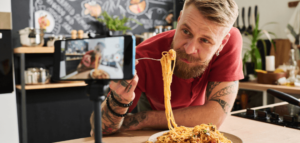
Burger King’s Sizzling Marketing Strategies & Campaigns
Founded in 1953, Burger King changed hands many times and underwent multiple transformations in how they approach advertising. Through the 1970s and up until the 2000s, Burger King’s marketing strategy was handled by numerous agencies specialized in Fast Food Marketing, but none of them are as creative as its recent wonders.
History of Burger King
Initially called “Insta-Burger King”, the restaurant was sold to Miami-based franchisees James McLamore and David Edgerton only a year after its opening. In 1955, the Burger King character was created. The Whopper was launched in 1957, while McDonald’s still sold burgers tiny in comparison. Within 2 years, Burger King released its first television commercial, then established its franchising system. Following decades are a wild ride. Four acquisitions and a merger between 1967 and 2002 are followed by the final Tim Hortons merger in 2014 to form a new parent company called “Restaurant Brands International”. Now, the fast food chain has over 18,000 stores in nearly 100 countries.
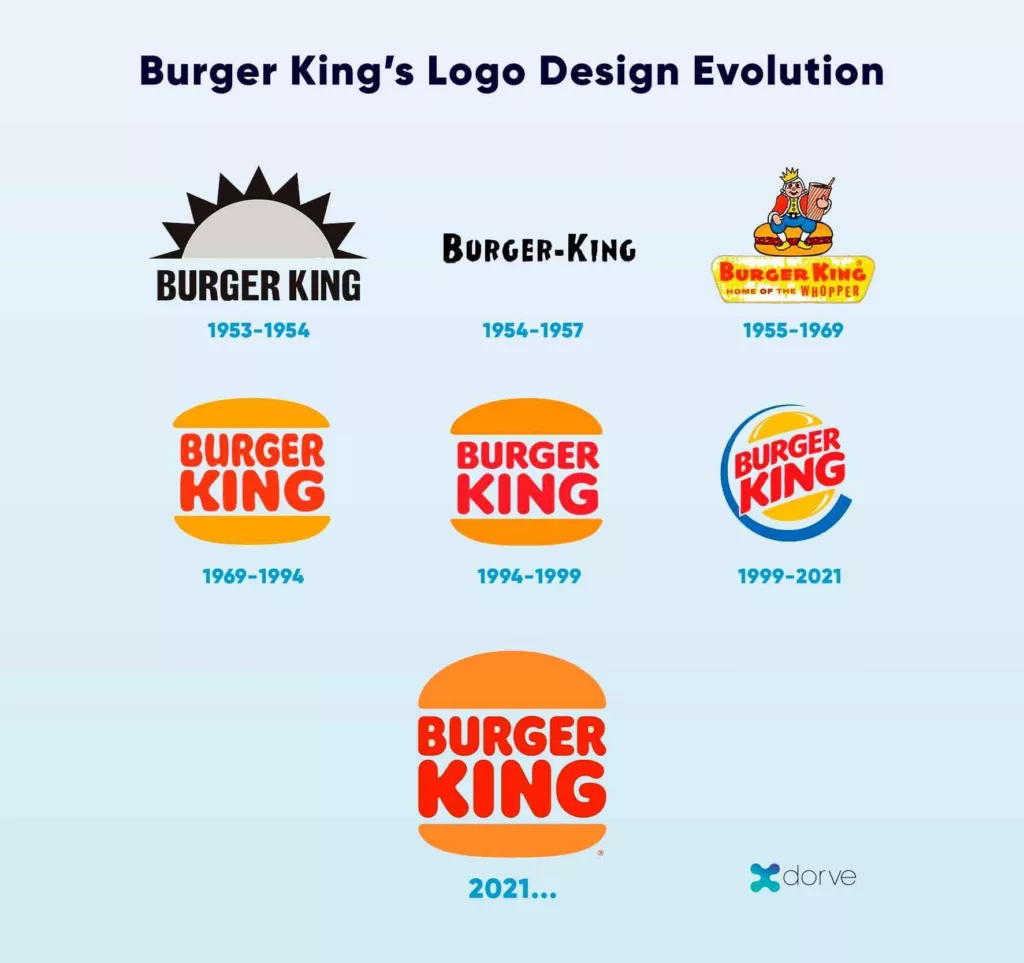
Rebranding of Burger King
Going along with many acquisitions and mergers, Burger King brand identity changed regularly. The Burger King character was used as a logo between 1955 and 1969 but then more simplistic designs featuring a burger was favored. In 2002, the new management tried to undo decades worth of unsuccessful advertising by going with a fresh creative team. Burger King’s marketing strategy after that targeted the 18-35 demographic. The brand established a new online presence and the new ad campaigns redesigned the Burger King character now nicknamed “The King”.
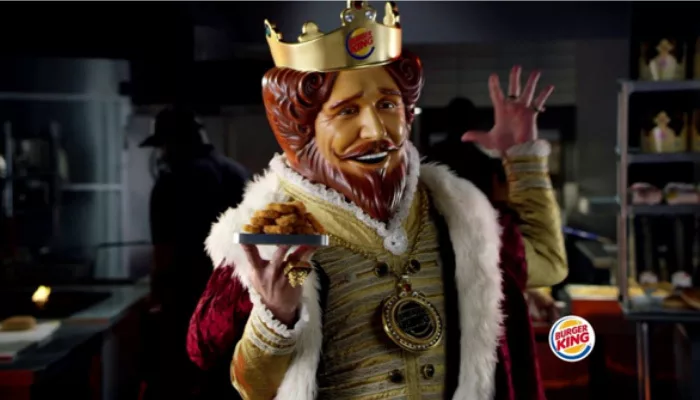
But when the recession hit in 2008 and affected Burger King’s targeted demographic, the brand faced another acquisition. Eventually, that meant a new creative agency, and saying goodbye to The King. The new Burger King marketing strategy was focused on the food and the ingredients with a wider segment of customers to target. The food-first approach came with seriously creative marketing that was not afraid to make fun of the world, snark at competitors, or make current statements.
Burger King Marketing Strategies
Burger King’s marketing strategies have always been about pushing the envelope and engaging consumers in unique, often unexpected ways. As a brand that’s not afraid to take risks, Burger King’s approach is multifaceted, targeting a broad demographic through a mix of traditional advertising, digital innovation, and creative campaigns that often go viral.
The essence of Burger King’s marketing strategy lies in its ability to remain relevant and resonate with consumers’ current interests and behaviors, making the brand not just a fast-food chain but a part of popular culture.
To better understand Burger King’s sizzling strategy, let’s go through the elements of their marketing mix one by one:
Marketing Mix of Burger King
Burger King’s marketing mix, or the 4Ps, is expertly designed for broad reach and customer engagement while ensuring that the brand effectively connects with its audience, leveraging innovative products, competitive pricing, strategic locations, and dynamic promotional tactics to stand out in the fast-food industry.
Product
Burger King’s product strategy shines with its forward-thinking menu offerings designed to cater to diverse consumer preferences. A standout example is the launch of the Impossible Whopper, which significantly boosted Burger King’s sales, contributing to a 5% increase in U.S. sales. This plant-based burger, marking one of the most successful launches in the brand’s history, appealed broadly to customers, including millennials and Gen Z consumers attracted by sustainability messages.
Price
Burger King employs a competitive pricing strategy, evident in its various promotional deals designed to offer value to customers. These deals not only attract price-sensitive consumers but also encourage frequent visits, strengthening customer loyalty and ensuring Burger King remains a top choice for affordable fast food.
A good example supporting Burger King’s competitive pricing strategy is their 31 Days of Deals promotion in December 2023. This promotion offered Royal Perks members daily deals through the BK app, including $3 Whoppers on Wednesdays and a one-cent breakfast sandwich on a specific day, showcasing Burger King’s efforts to offer value and encourage frequent visits.
Place
With an expansive global presence, Burger King ensures convenience and accessibility through strategic location placements, drive-thrus, and delivery services. The brand’s adaptation to consumer behavior changes, especially during the pandemic, was highlighted by the expansion of its delivery services through partnerships with third-party apps like Uber Eats. This move ensured that Burger King stayed relevant and accessible, even when traditional dining experiences were disrupted.
Promotion
Burger King’s promotional strategies are notable for their creativity and effectiveness in engaging customers. The Stevenage FC sponsorship is a brilliant example, where Burger King leveraged the team’s appearance in FIFA 20 to gain digital visibility, resulting in a significant increase in brand engagement online. Another ingenious campaign, the Whopper Detour, used mobile app technology to entice customers near McDonald’s locations to order a Whopper for just 1 cent, showcasing Burger King’s flair for playful and engaging marketing tactics. Burger King’s campaigns not only drove app downloads but also created a buzz, demonstrating Burger King’s skill in blending traditional and digital marketing strategies to capture consumer attention and foster brand loyalty.
Burger King Digital Marketing And Advertising Campaigns
The creative marketing strategies of Burger King certainly have a sense of humor that connects well with its customers.
Let’s have a closer look at a few examples, and it’s ok to giggle a little.
Traffic Jam Whopper
In 2019, Burger King advertising strategy targeted the motorists stuck in the Mexico City traffic jam. Using real time data like location and speed, billboards along the route displayed remaining time in traffic and how much time the drivers had to order directly to their cars. Food delivery by couriers on motorcycles combined with personalized messaging on digital billboards made the Traffic Jam Whopper Project an instant hit. It was a genius move among their other promotion adaptation examples. The campaign brought a 63% jump in food delivery orders in the first week, and led to a 44-fold increase in app downloads.
Whopper Detour
McDonalds’ marketing strategy may be unique branding, Burger King’s is taunting the clown. This isn’t even the first time. In Scary Clown Night campaign, Burger King offered a free Whopper to anyone who dressed as a clown on Halloween. The Whopper of a Secret campaign revealed that in every piece of Whopper ad released in 2019, there was a Big Mac hiding, but it was so small that no one noticed. “Whopper Detour”, on the other hand, brought the fight to its competitors own house. The initiative encouraged app users to visit a nearby McDonald’s to unlock a Whopper. The jokesters behind this marketing strategy deliberately sent traffic to McDonald’s only for them to bolt after a second for a Whopper. Those at the office must be having a field day.
Burn That Ad
The trolling never ends with Burger King’s marketing strategy, but the restaurant chain aimed at all its competitors with this one. “Burn That Ad” was a sneaky campaign. All the advertising material Burger King competitors released into the wild ended up promoting the Whopper burger. The way it worked was, anyone could aim the Burger King app towards the advertisements of its rivals to “burn” it in virtual reality and the flames would reveal that they have won a free Whopper. This was a show of mastery in brand awareness. For the duration of the campaign, whenever a customer saw a promotion of one of the fast food chains, they thought “Whopper!”
Collaborations in Burger King’s Marketing
With these, Burger King’s marketing strategy is co-branding. During the pandemic, the brand partnered with TikTok to create Whopper Dance Challenge. Burger King wanted to engage with the users of the rising social media platform and also capitalize on the unspoken platform trend to turn everything into a dance challenge. It’s simple: you participate, you get a Whopper for $1.
In 2022 and 2023, the chain teamed up with Activision to transform a Burger King store into the Burger Town restaurant of Call of Duty: Modern Warfare, complete with a gaming hub set up for customers to play. This campaign was supplemented with Call of Duty-themed meals and perks for the game like skins and double XP.
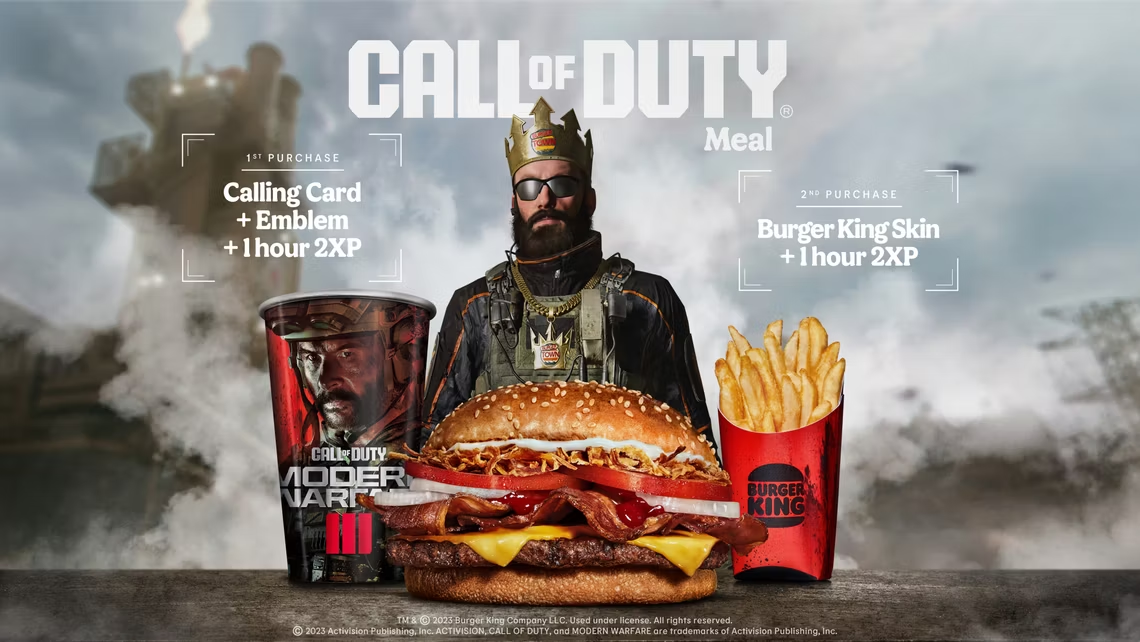
Burger King’s advertising campaigns don’t lose touch with pop culture, either. The tongue-in-cheek meal Upside Down Burger, promoting the third season of Stranger Things, was a hit. Recently, a similar marketing strategy was followed with the “Spider-Verse” Whopper to ride the hype around the latest Marvel production.
Moldy Whopper
In 2020, Burger King, in collaboration with Ogilvy, launched the Moldy Whopper campaign, not confined to Instagram but spanning multiple platforms.
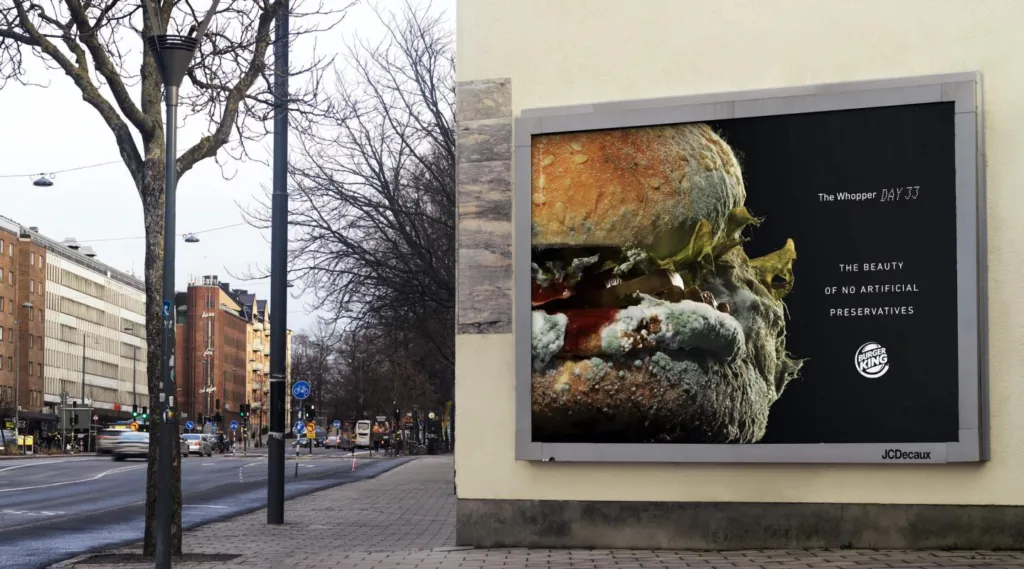
This bold campaign showcased a Whopper overgrowing with mold to emphasize “the beauty of no preservatives,” highlighting their commitment to fresh ingredients. It sparked widespread debate, driving significant discussion on food quality and brand transparency.
Whopper Whopper (Whopper Whopper)
In the fall of 2023, Burger King debuted its “You Rule” advertising campaign. This time the Burger King strategy hid the franchise’s mascot, the King. Instead, Burger King marketing strategy treats the customer as royalty.
It’s alright for an ad, but the jingle is another story. Tom Curtis, Burger King US President, admits that he didn’t like the song, found nothing special about it. Millions disagreed with him, though. The song went viral. Upon popular demand Burger King released it on Spotify where it reached 3.3 million streams. Memes on Twitter and TikTok boosted popularity, too. And that’s how Burger King surprised itself with its marketing strategy.
you rule ❤️👑 https://t.co/BJopThK5t0
— Burger King (@BurgerKing) March 8, 2023
Burger King Social Media Campaigns
Burger King’s social media campaigns are a unique blend of creativity, humor, and trend engagement, making them a standout in digital marketing.
Here’s how Burger King’s campaigns create buzz on social media:
Happy Valentine’s Day!
Burger King embraced the spirit of Valentine’s Day on Instagram (and TikTok) with a creative twist, sharing content that playfully slides through burger images.
Each burger symbolized viral love-related concepts, such as enduring the task of peeling an orange for a loved one, or cherishing your partner even if they magically transformed into a gummy bear.
Behind the Flame – BK Netherlands
On TikTok, Burger King Netherlands pulled back the curtain, showcasing the craft behind their burgers.
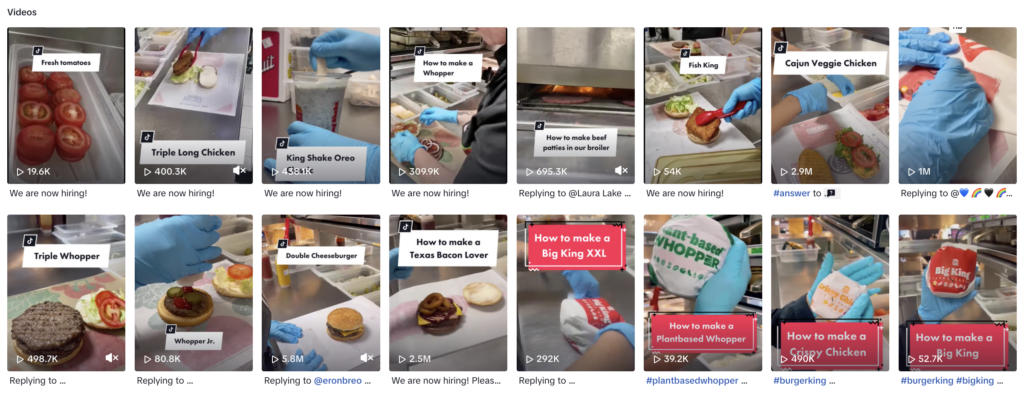
Through engaging, behind-the-scenes content, they revealed the journey of fresh ingredients from prep to plate, reinforcing their commitment to quality and transparency.
Instagram Contests
Burger King created excitement on Instagram with its “Million Dollar Whopper Contest”, inviting fans to unleash their creativity in crafting their dream Whopper.
With just a few taps on the BK app or a visit to bk.com/MDW, participants could personalize their masterpiece. This interactive campaign totally encouraged a sense of fun and community among burger enthusiasts, turning each entry into a flavorful work of art!
Briefly, Burger King’s out-of-the-box marketing strategies get the job done in the most interesting ways. Any fast food chain that wants to follow in the King’s footsteps faces a whopper of a challenge in creativity.




















